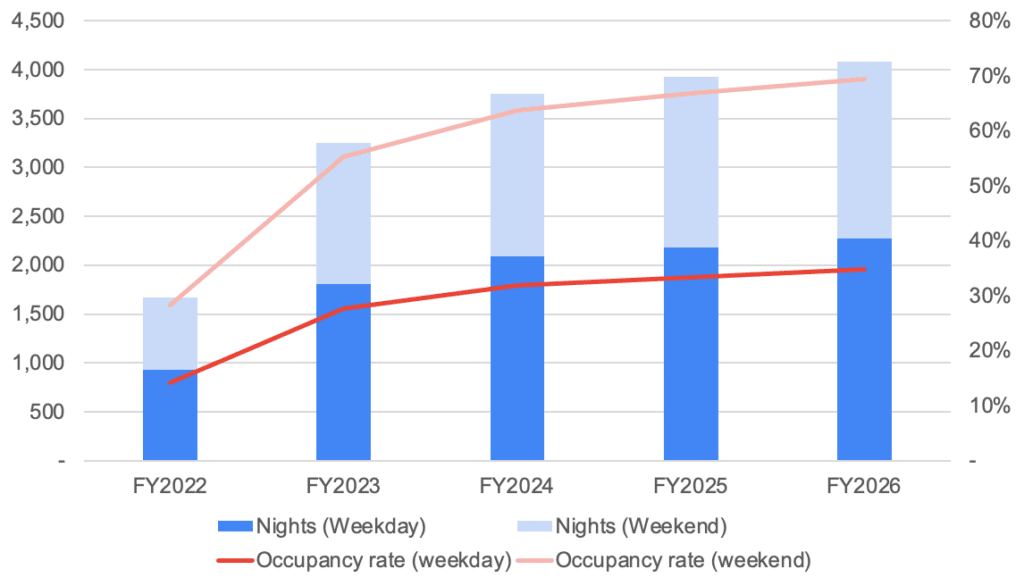Financial modeling is the cornerstone of effective business planning. For entrepreneurs and small business owners, understanding and applying financial models can be the key to unlocking strategic insights and guiding crucial business decisions. All our models in our shop contain full 3 way statement models including a P&L statement that flows through to the Balance Sheet and Cash Flow Statement. We also sell a Student Bundle which includes 7 different business templates by industry that you may find useful or a Startup Company Financial Model Template which is also an excellent model to showcase how the Profit and Loss Statement works with the other Statements in a Company’s Financials.

What is Financial Modeling?
Financial modeling involves creating a numerical depiction of a business’s financial outcomes, using historical data, assumptions, and predictive analysis. It encompasses elements like revenue projections, profitability, cash flow, and valuation to help visualize business goals and plan strategically. According to Wall Street Prep’s resources on financial modeling, it’s an essential tool used by startups, investors, and business executives to evaluate profitability, plan funding, and analyze efficiency.
The Importance of Financial Modeling
Financial models provide essential foresight into a business’s future performance:
- For Startups: Models are used to present clear revenue forecasts when raising funding.
- For Investors: They assess risk and potential returns.
- For Banks: Pro forma statements are often necessary for loan approvals.
For small business owners, models aid in internal budgeting and goal setting. Incorporating a Free Financial Model Template by LegalVision can enhance these processes by accurately tracking cash flow and forecasting company performance.
Key Components of a Financial Model
-
Projected Income Statement
This statement, known as the profit and loss statement, projects revenues and expenses over time. Utilize an Income Statement Template to organize forecasts around:
- Sales and revenue
- Operating costs
- Net income
-
Balance Sheet
The balance sheet details your company’s assets, liabilities, and equity. Track them using a balance sheet template, which is crucial for maintaining a balanced financial snapshot.
-
Cash Flow Statement
This statement is vital for understanding liquidity. For instance, a well-structured cash flow statement example can guide operational, investing, and financing activities.
Together, the income statement, balance sheet, and cash flow statements form the 3 Statement Model, a standard in professional modeling.
Tools to Build a Financial Model
Using Templates Effectively
A Free Financial Model can significantly streamline the modeling process, providing pre-designed formats that integrate assumptions with financial data. These templates often feature:
- Dynamic revenue and cost projections
- Scenario analysis tools
- Automated reports
For specific industries, such as manufacturing or serviced apartments, using tailored models such as a manufacturing financial model template can offer more relevant insights.
Practical Usage and Application
When presenting data to stakeholders or investors, leveraging a Financial Report Template helps format insights professionally.
Step-by-Step Guide to Building a Financial Model
-
Define Business Assumptions
Incorporate realistic assumptions backed by market research related to pricing, sales volume, and cost structures.
-
Revenue Projections
Forecast sales growth over time, essential for product-based and service-based businesses.
-
Construct the Income Statement
Calculate net profit by inputting expected revenue and associated expenses.
-
Assemble the Balance Sheet
List all assets, liabilities, and equity, ensuring alignment with expected cash flow outcomes.
-
Develop the Cash Flow Statement
Detail the sources and uses of cash to prevent liquidity issues, referencing best practices from sources like Startup Financial Models.
-
Review and Adjust
Test different scenarios, refine assumptions, and seek feedback from financial advisors.
Small Business Valuation
Accurate financial models facilitate [valuation] of a business using approaches like:
- Discounted Cash Flow (DCF)
- Comparable Company Analysis
These methodologies require precision, achievable with a robust model framework.
Frequently Asked Questions
What is the purpose of financial modeling in business planning?
Financial modeling provides a structured approach to forecast financial performance and make informed strategic decisions.
How do templates assist in financial modeling?
Templates simplify the modeling process with standardized formats, reducing the need for intricate manual calculations.
Is financial modeling only for large corporations?
No, financial modeling is beneficial to startups, small businesses, consultants, and investors for planning, managing, and evaluating financial performance.
Final thoughts!
Embracing financial modeling empowers business owners with clear insights into potential financial paths. By utilizing tools like an Excel Financial Modeling Template or a comprehensive financial analysis template, entrepreneurs can gain precision in their strategic planning. These resources transcend financial expertise, making them accessible and invaluable for any size business seeking sustainable growth and profitability.



